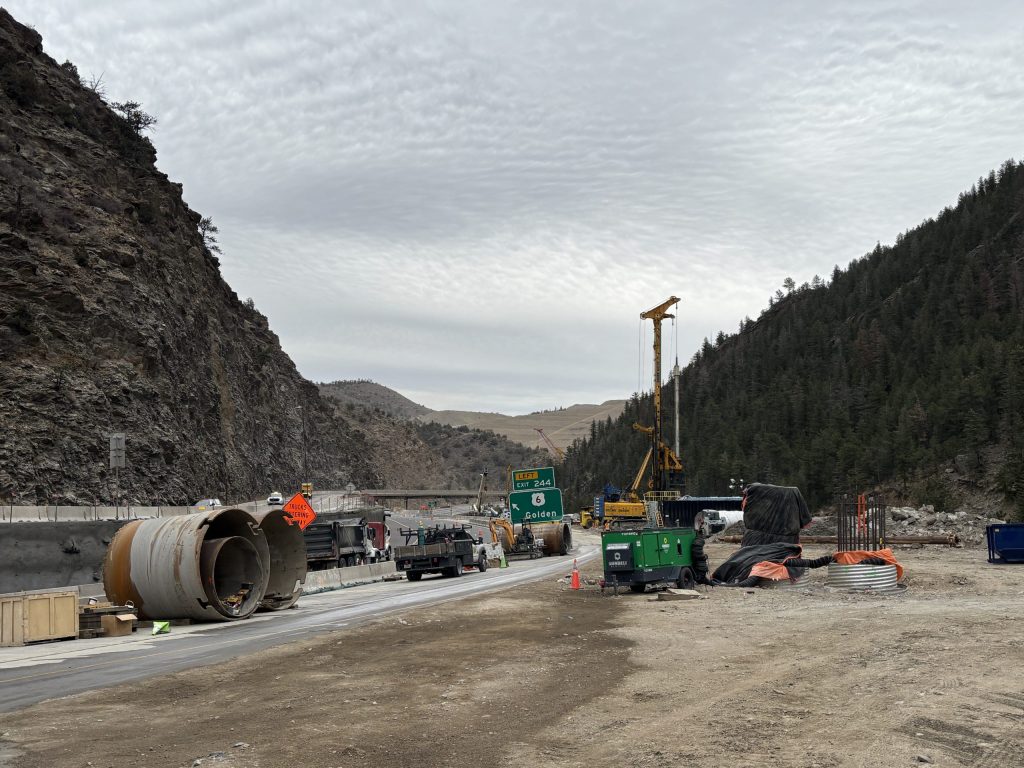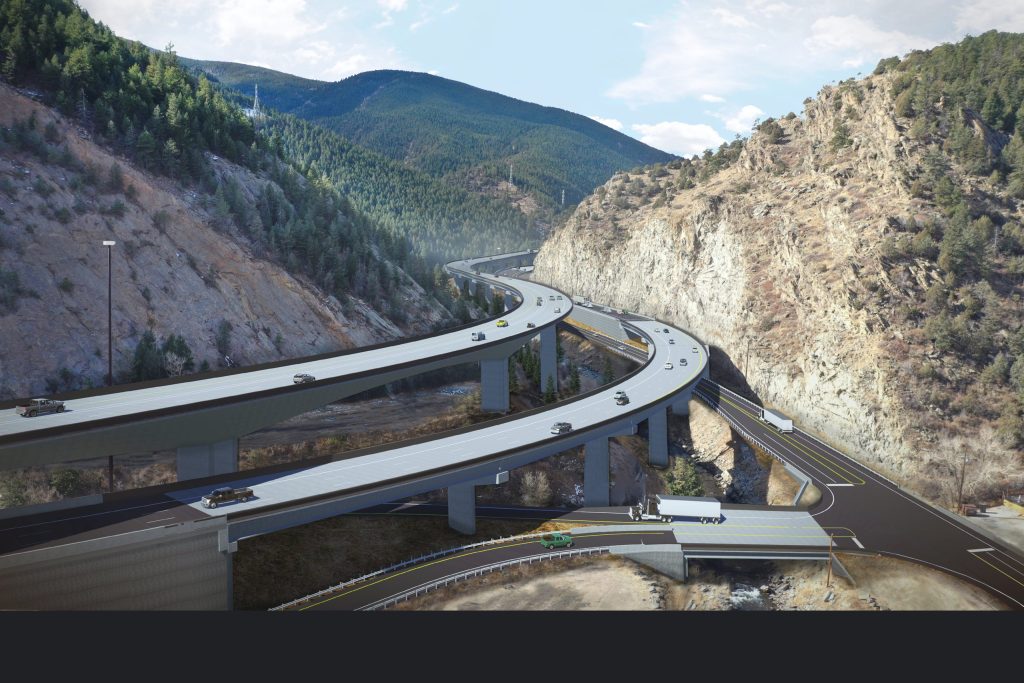
The Colorado Department of Transportation is entering a dramatic new phase of its $900 million Floyd Hill Project, with bridge construction now underway and visible from Interstate 70. For the thousands of daily drivers moving between Denver and the central mountains, the coming months will reveal what CDOT describes as a once-in-a-generation transformation of one of the state’s most important highways.

Since the project began in 2023, CDOT and contractor Kraemer North America have moved aggressively through the early stages — including more than 135 rock blasts and removal of over 600,000 tons of material, equal to the weight of 20 Statues of Liberty. This massive excavation has created the wider corridor needed for new bridges, safer curves, and a third lane designed to cut down on notorious weekend backups.
With foundational rock work largely complete, the public will now begin to see the shape of the new interstate alignment.
“Over the next four to six months, people are going to start to see where the new alignment is going to go,” said Matt Hogan, project manager for Kraemer North America. “They’re going to start to realize the magnitude and the size of the project, and hopefully really start to envision the future of what driving on this mountain corridor is going to be.”
Drivers who regularly battle congestion between Evergreen and Idaho Springs will soon see structural elements, supports, and elevated segments of what will become 115-foot-tall bridges designed to modernize the highway’s 1960s-era geometry.
The 8-mile stretch between Mile Points 241 and 248 serves as a gateway to the Rockies, a critical freight corridor, and the beating heart of Colorado’s tourism economy. CDOT has repeatedly called Floyd Hill an “economic gateway for the state of Colorado and the nation.”
Yet the westbound pinch point — where three lanes shrink to two — has long caused travel-time unpredictability, accident spikes, and severe delays during ski season and holiday weekends.
To solve this, CDOT is building a full-time westbound Express Lane, running from Homestead Road (Exit 247) to Idaho Springs (Exit 241). The new lane is expected to dramatically improve traffic flow and reduce weekend gridlock.
“We see a lot of bottlenecked traffic and huge impacts on the weekends,” said CDOT spokesperson Stacia Sellers. “If we can keep traffic flowing, create that travel time reliability, you’re incentivizing people to come back up into the corridor.”
One of the biggest engineering challenges is replacing the existing outdated bridges and reconfiguring the road to eliminate curves rated for just 45 mph, below the corridor’s intended speeds.
CDOT Floyd Hill Project Director Kurt Kionka explained that the new alignment will raise curve design speeds to 55 mph and improve overall safety.
Kionka added that shutting down I-70 for extended periods was never an option:
“We are committed to keeping traffic moving through here. We know the importance of the I-70 corridor, especially for the mountain towns.”
To accomplish this, crews will build new bridges above the old ones, shifting traffic only when each segment is ready, minimizing disruption aside from nighttime closures.

Beyond the interstate itself, the project includes a new two-mile frontage road between the U.S. 6 and Hidden Valley/Central City Parkway interchanges. This secondary roadway will provide a long-needed detour option and faster emergency response when the interstate is blocked by crashes or winter weather.
CDOT has also installed more than two miles of wildlife fencing, which Kionka said is designed to reduce wildlife-vehicle collisions by over 90% — a major improvement for a corridor known for frequent animal crossings.
CDOT says rock scaling and blasting will continue this winter, with traffic holds between 9 a.m. and 3 p.m. Monday through Thursday, though only during off-peak hours.
In December, crews will implement several overnight westbound closures to construct temporary bridge framework directly over active traffic lanes — a complex operation carefully timed to avoid major disruptions.
The project’s timeline remains:
To date, more than 1,200 workers have logged 550,000+ hours, supported by 162 subcontractors — 152 of them Colorado businesses.
With construction ramping up in tighter spaces, crews emphasize the need for drivers to be cautious.
“Slow down for us, please… There are men and women and parents and fathers and mothers working out here,” Hogan said. “The biggest request for us is to slow down in the work zone.”
He noted that driving 45 mph instead of 65 mph adds only 1.5 minutes to the trip — a small sacrifice that could save lives.
Originally reported by Ryan in Vail Daily.